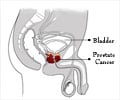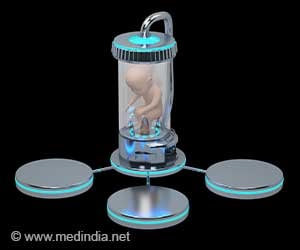
"We were trying to develop a fast, convenient, outpatient, non-invasive treatment," said Dr. Robert Timmerman, vice chairman of radiation oncology and professor of neurological surgery and senior author of the study. "In the low-risk population, there are a lot of good options, but none of them are altogether convenient. The most convenient treatment would finish quickly without the need for a prolonged recovery."
SBRT has been used in the last decade to treat patients with lung, liver and brain cancers. The current study tested whether high-potency treatments would work in a moving target like the prostate, which moves considerably due to normal bladder and bowel filling.
"We're trying to kill the prostate cancer, but without injuring the urethra, the bladder or the rectum," Dr. Timmerman said. "Each treatment had to be very potent in order to get the full radiation effect in only five treatments."
To avoid injury to healthy tissue, researchers used beams of radiation that were just millimeters larger than the target itself. That narrow scope helped avoid consequences such as rectal injury, impotence and difficulty urinating.
Prostate cancer is the most common cancer in men, with some 200,000 diagnosed each year in the U.S. About half of those who are treated undergo radiation therapy, typically for eight weeks. Not everyone is cured, however, because some tumors are resistant to radiation.
Advertisement
"There were a few more complications associated with higher doses, but they were fairly predictable and rarely severe," said Dr. Yair Lotan, associate professor of urology and a co-author of the study. "By giving these higher doses, we might be able to kill more resistant tumors with shorter treatments."
Advertisement
Source-Eurekalert



![Prostate Specific Antigen [PSA] & Prostate Cancer Diagnosis Prostate Specific Antigen [PSA] & Prostate Cancer Diagnosis](https://www.medindia.net/images/common/patientinfo/120_100/prostate-specific-antigen.jpg)









